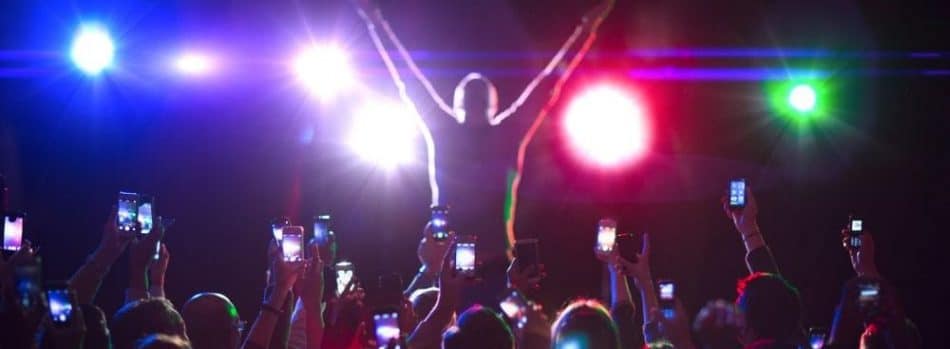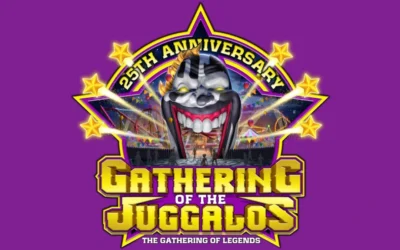I used to be a crazed fangirl, jumping at any opportunity to get as close to my favorite artists as I could. I would push through the crowd, stay after the show and get there insanely early just so I would have a spot right at the front of the barrier. When the musician came out, I would hold up my phone – like a blood thirsty paparazzi – and get that “perfect” picture. Sometimes, this would last throughout most of the show. I would tell myself that these pictures and videos I took were to act as “memories” of the show, and that’s why I took them. But then, something changed.
I was at a small, intimate venue, seeing one of my favorite artists perform live. Just like always, I was front and center, clutching my phone, and the lead singer looked at me. We locked eyes as he sang the lyrics right at me, yet he couldn’t even see me – I was too caught up shoving my screen in his face. It really made me take a step back and think to myself: what am I doing? I’m not actually watching a concert, I’m just looking at it through a lens. And if that’s the case, why am I at a live show when I could watch it on a screen from home?
Concerts are thrilling, moving, and inspiring. The main reason music fans go to shows is to feel the energy and overall vibe from everyone around them. It’s so much different than listening to music on headphones; the bass is electrifying, the percussion vibrates beneath your feet, and you feel united with the people singing lyrics alongside you. That’s the reason for live shows, and although pictures and videos help remember this amazing moment, the memory should stand on its own in your thoughts, rather than just an image.
A few years ago, I interviewed John O’Callaghan, lead singer of the alternative band The Maine, while on Warped Tour. During their final song of the set, he asked the crowd if everyone could put their phones down and live in the moment for just those few minutes. Although there were a few crowd members who disobeyed Callaghan’s request, a majority of the crowd listened to him. During that final song, a new energy was felt in the air – when no one was looking at their phone or distracted from outside sources.
When I caught up with him after the show, I asked him about his request. He explained that cell phone videos of a performance “leaves a lot less up to the imagination and the anticipation of seeing a show.” When he was a teenager going to shows, he only had a flip phone, so instead of taking pictures, he remembered concerts by how many times he crowd-surfed or lost his shoes. Now, he urges fans to get the same experience by putting down their phones, even if only for a song or two.
O’Callaghan isn’t the only artist to try and put forth a stronger no-phone policy at concerts. Former The White Stripes lead singer Jack White has announced a cell phone ban for his upcoming tour, claiming in a Rolling Stone interview that excessive technology use affects his “mindset as a performer.” He explained that after finishing a song, there would be crickets, and he wouldn’t know what to play next. The crowd seemed disengaged, and he strongly believes that has something to do with texting.
“When you go to a movie theater, a symphony, church, whatever – there are all these moments in life where people put [phones] away and engage,” he said. “And I love the idea of rock concerts being punk as hell and there are no rules. I love that. But I don’t like the idea that I have no idea what to play next. And I need that. Because I’ve walked offstage before like, ‘Man, I don’t know what to do anymore. If this is how it’s going to be from now on, it’s going to be very difficult.”
He refers to not-carrying a cell phone as “freedom in a humongous way.” From now on, White will be using the Yondr service, which locks concertgoer’s phones in a pouch during the show. The San Francisco-based company uses special mobile cases to lock the phone of each member of the audience. They cannot access the phone throughout the show unless they use it in a “phone use area,” like the concert venue’s lobby.
Although artists like the Lumineers, Alicia Keys and Childish Gambino have used Yondr before, White will be the first to use the service throughout his entire U.S. tour. Personally, I find this idea fantastic. While some venue owners think concerts should be a free space without limitations, it can get extremely distracting. Phones affect the audience, the artist, and your own personal experience. I’ve seen so many people scrolling through Instagram or answering Snapchats during a live show which makes me think: why are you really here? And don’t get me wrong, I’ve been on social media during a show too, but that might be because I’m holding my phone. If it was locked, that might be a different story.
White has the right idea, but for emerging artists who can’t afford to get this service and still want the audience to actually pay attention to their show, I think it’s still possible. For example, moshing is extremely prohibited at shows – same thing with smoking. While at Toad’s Place in New Haven, I watched as security guards pushed people back into the audience when they were crowdsurfing and aggressively stopped people from moshing. Then, at an Aer concert at The Met in Providence, I witnessed a girl literally being pulled out of the crowd for smoking a joint. So, phones can be alongside these rules at venues. Signs can be posted around the venue, security can enforce the rule, and artists can state it during the performance, just like O’Callaghan did.
Just like anything in life, with a little enforcement, it’s possible. I believe that White is paving the way for more artists to use this policy, and maybe he might even spark a change to the entire concert world as we know it.




